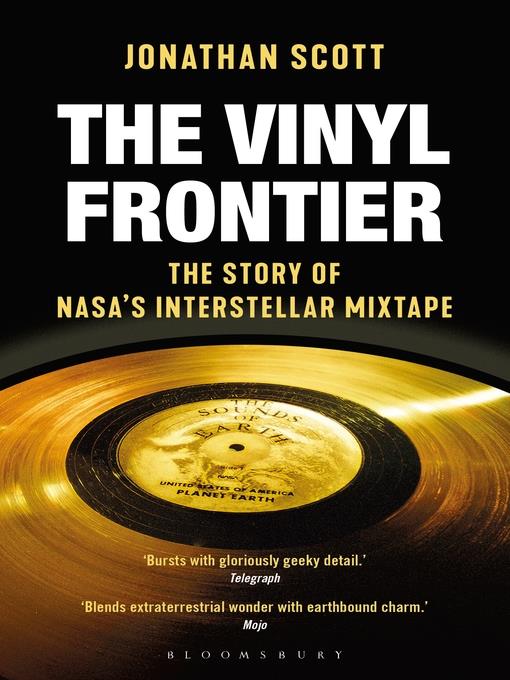
The Vinyl Frontier
The Story of NASA's Interstellar Mixtape
کتاب های مرتبط
- اطلاعات
- نقد و بررسی
- دیدگاه کاربران
نقد و بررسی

Starred review from March 25, 2019
Music journalist and Record Collector contributor Scott creates a high-energy, interplanetary pop song of a book devoted to the six-week project led by Carl Sagan and astrophysicist Frank Drake in 1977 to create a playlist of music and sounds to accompany NASA’s Voyager probe into space. Scott, who acknowledges he is more of an expert on mixtapes than astronomy, proves an enthusiastic and upbeat guide through the universe of bureaucratic red tape, tight deadlines, and romantic entanglements that revolved around the compilation effort. His thoroughly researched account draws on interviews with and unpublished writings by Voyager Record team members to explain the decision-making process behind various inclusions, including Chuck Berry’s rock ’n’ roll standard “Johnny B. Goode”—picked when the other pop song in contention, the Beatles’ “Here Comes the Sun,” proved unconscionably expensive —and legendary bluesman Blind Willie Johnson’s “Dark Is the Night,” “arguably the most haunting sound on the record,” for which team member and famed ethnomusicologist Alan Lomax lobbied. Scott summarizes the story best as being “about an awesome band of ordinary yet exceptional individuals who created a wonderful yet genuinely weird monument.” Delivered with effortless grace, this buoyant look at one of NASA’s most unusual but oft-overlooked efforts will appeal to music fans and astronomy buffs alike.

Starred review from May 1, 2019
The most intriguing stories are often found in the details, and this is the case for music writer Scott's engaging and conversational look at the creation of the gold-plated records that are still traveling throughout the universe on the two Voyager probes launched in 1977. The records were intended to bring sounds, music, sentiments of peace, and even pictures to potential alien races, and Carl Sagan and his team delivered a stunningly high-tech LP (one copy of The Sounds of the Earth travels with each probe). Descriptions of the time and intellect devoted to the process of content selection, as well as the ingenious methods of data transfer used for the nonaudio components, are fascinating, but the personal tales behind this "message to the stars" are just as enthralling. Sagan, the leading scientist behind the Voyager recordings, published his own account, Murmurs of the Earth, just after Voyager launched, but Scott has the benefit of a wider range of information and sources and an objective view of the process. This is also a very relatable and human way to approach deep space exploration. VERDICT A must for all libraries.--Peter Thornell, Hingham P.L., MA
Copyright 2019 Library Journal, LLC Used with permission.

Starred review from April 15, 2019
In 1977, Carl Sagan led the team that produced the golden records placed on board the deep-space probes, Voyager 1 and Voyager 2. Instigated by NASA, Sagan took the idea of sending a message into space and ran with it, gathering a group of friends and associates (including science writer Timothy Ferris and ethnomusicologist Alan Lomax) who created a work of art encompassing images, sound, and music. No one had ever done anything like it before, and Scott, who charmingly shares his own mixtape history, lays bare all the drama and barely controlled chaos behind the scenes, including the fact that the married Sagan fell in love with the creative director (and his future wife) Ann Druyan, then Ferris' fianc�. The story of the Voyager record is fascinating. How to decide what pictures capture Earth's story best? What music and speeches from which countries best express the human experience? What earthly sounds are most significant, and how to explain them? But Scott makes the tale even more intriguing with occasional asides and well-deserved moments of disbelief. NASA's insistence that the names of every member of Congress be included, for example, is the source of much eye-rolling. Insightful, engaging, and thoroughly enjoyable, this is the sort of popular history book clubs adore.(Reprinted with permission of Booklist, copyright 2019, American Library Association.)

























دیدگاه کاربران